 We’re looking at how mobile payments are making news and disrupting the financial industry status quo around the globe. WeChat Pay is growing fast in China and is now Alipay’s biggest competitor within just three years. Investors as well as customers are liking McDonald’s plans for mobile order and pay. Samsung Galaxy S8 users could soon be making mobile payments with facial and iris scans and selfies.
We’re looking at how mobile payments are making news and disrupting the financial industry status quo around the globe. WeChat Pay is growing fast in China and is now Alipay’s biggest competitor within just three years. Investors as well as customers are liking McDonald’s plans for mobile order and pay. Samsung Galaxy S8 users could soon be making mobile payments with facial and iris scans and selfies.
Bitcoin-powered mobile app BitMaker uses block token incentives to get its 250,000 users to download apps, play games and view ads. Emma Beckerle, director of Client Services and Account Management at LevelUp, said after getting the first mobile order, users start to spend more, more frequently. MasterCard and PayRange are retrofitting more than 300 vending machines with a mobile app payment dongle that lets consumers pay with their phone easily. Poland’s mBank embeds Android Pay and adds convenient features for mobile payments.
 While Amazon Bookstores use mobile technology, one customer says it could use a few mobile beacons to provide a better customer shopping experience. Transactis and Walletron partner to expand mobile billing and payments app BillerIQ. Research by LendEdu shows young millennials are still slow adopters of mobile payments despite being tech-savvy and curious. Only 14% regularly use their bank’s mobile payment app, 35% never use a mobile payment app and 44% have used P2P app Venmo.
While Amazon Bookstores use mobile technology, one customer says it could use a few mobile beacons to provide a better customer shopping experience. Transactis and Walletron partner to expand mobile billing and payments app BillerIQ. Research by LendEdu shows young millennials are still slow adopters of mobile payments despite being tech-savvy and curious. Only 14% regularly use their bank’s mobile payment app, 35% never use a mobile payment app and 44% have used P2P app Venmo.
Free mobile app Validated lets retailers and restaurants pay for customer transportation by Uber and Lyft as a thank you for their shopper loyalty. Financial savings app Digit is about to find out if consumers will pay $2.99 a month for its money-saving service despite the backlash after announcing the new user fee recently.
How WeChat Pay became Alipay’s largest rival
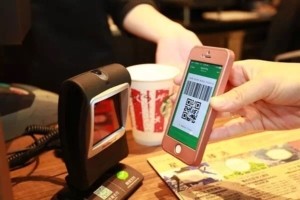 Mobile payments is one of those areas of contention. It’s a lucrative and high-growth market, growing more than 200 percent year-on-year during the fourth quarter of 2016, when it hit US$186 billion. Mobile payments are also a key access point to consumer data, especially in China, where more than half of online sales happen through a smartphone.
Mobile payments is one of those areas of contention. It’s a lucrative and high-growth market, growing more than 200 percent year-on-year during the fourth quarter of 2016, when it hit US$186 billion. Mobile payments are also a key access point to consumer data, especially in China, where more than half of online sales happen through a smartphone.
Ant Financial, Alibaba’s financial affiliate, has long dominated the market with Alipay, its mobile wallet. Launched in 2009 as one of the earliest mobile payments solutions, Alipay owned about 80 percent of the market for five quarters straight, starting in the third quarter of 2013. But that stronghold is slowly slipping.
WeChat Pay has become Alipay’s biggest competitor.
“Because of WeChat’s traffic and social advantage, in these past two years, WeChat Pay has become Alipay’s biggest competitor,” Wang Pengbo, finance analyst at research firm Analysys, tells Tech in Asia. WeChat Pay, which launched in 2013, is the mobile wallet inside Chinese social messaging app WeChat.
Last month, Analysys published a report on China’s mobile payment market for the fourth quarter of 2016. Alipay had a market share of 54.7 percent; Tenpay – which includes WeChat Pay – came in second with about 37 percent. And while Alipay saw higher transaction amounts – influencing its overall market share – Tenpay had almost double the number of active users. Via techinasia.com
McDonald’s mobile ordering bet could pay off big
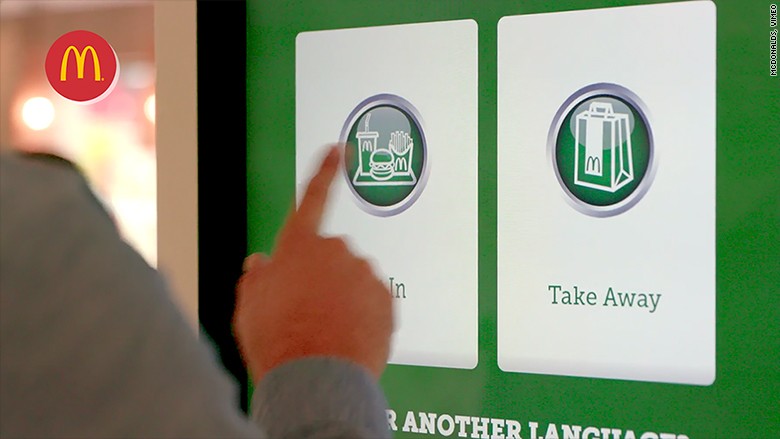 Shares of Mickey D’s hit an all-time high on Friday. McDonald’s (MCD) stock is now up nearly 10% this year.
Shares of Mickey D’s hit an all-time high on Friday. McDonald’s (MCD) stock is now up nearly 10% this year.
McDonald’s has enjoyed an amazing comeback since CEO Steve Easterbrook took over in March 2015. He moved quickly to revamp the company’s menu and focus more on technology, such as self-ordering kiosks.
The changes quickly paid off, with McDonald’s reporting solid sales gains for much of 2015 and 2016. Sales have started to cool off a bit in the U.S. recently though, but investors don’t seem that alarmed. McDonald’s will report its latest results on Tuesday. Via money.cnn.com
Samsung Galaxy S8’s iris scanner could be used for mobile payments
 The iris scanning authentication method which Samsung introduced with the Galaxy S8 and S8 could soon be used for secure financial transactions.
The iris scanning authentication method which Samsung introduced with the Galaxy S8 and S8 could soon be used for secure financial transactions.
A new report from The Korea Herald suggests that several South Korean credit card companies are looking to implement the feature for the verification of mobile payments, lauding it as a more secure tool than passwords and fingerprint scanners. Samsung Card Co. is said to be among the first businesses to apply the method to its mobile app, while other big financial institutions are also expected to follow suit.
As you may know, Samsung features both facial and iris scanning on its new Galaxy handsets. Facial recognition has been available to Android devices since 2011 when it premiered with the Ice Cream Sandwich version of the OS under the name of “Face Unlock”. Back then, the feature was denounced as being unreliable and prone to vulnerabilities, but Samsung has managed to revive it with its latest flagships by introducing a superior selfie camera and making the authentication process extremely fast. Via phonearena.com
Bitcoin-Powered Mobile App BitMaker Amasses 250,000 Users
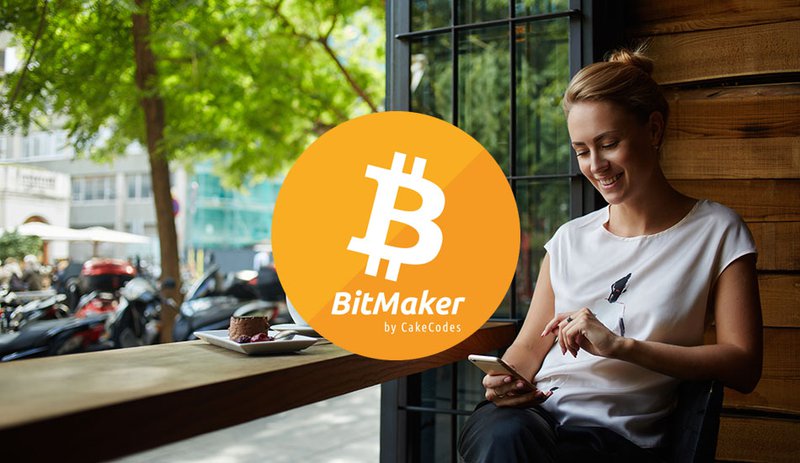 Over the past couple of years, a Bitcoin-powered mobile application developed by Seattle-based blockchain adtech and payments company CakeCodes has quietly amassed 250,000 active monthly users. The Android app BitMaker incentivizes users to engage with other mobile applications, such as freemium games, in an effort to get the user to download the app. BitMaker users are rewarded for trying out the apps and filling out forms found on traditional survey sites, with payouts made in either bitcoin or ether.
Over the past couple of years, a Bitcoin-powered mobile application developed by Seattle-based blockchain adtech and payments company CakeCodes has quietly amassed 250,000 active monthly users. The Android app BitMaker incentivizes users to engage with other mobile applications, such as freemium games, in an effort to get the user to download the app. BitMaker users are rewarded for trying out the apps and filling out forms found on traditional survey sites, with payouts made in either bitcoin or ether.
Bitcoin Magazine recently reached out to CakeCodes CEO Simon Yu to get more details on BitMaker’s success, how this Android app works, why they use bitcoin and how they plan to expand their operations in the future.
How Does It Work?
The point of BitMaker is to get users to try out other mobile applications or fill out forms for free trials of various products or services. It’s sort of a form of advertising where the viewer of the ad also gets paid in the process, which is something Brave is working on with their Bitcoin-enabled browser as well.
When tasks are completed in BitMaker, users are rewarded with in-app tokens known as Blocks. These “Blocks” can then be converted into bitcoin or ether once a certain threshold has been met. Via bitcoinmagazine.com
LevelUp on Making Mobile Order Ahead Pay
 First impressions are key in mobile order ahead, because, Beckerle emphasized, the first order is often the hardest order to get customers to make — and it is what pushes them on the path to really becoming a dedicated order-ahead user.
First impressions are key in mobile order ahead, because, Beckerle emphasized, the first order is often the hardest order to get customers to make — and it is what pushes them on the path to really becoming a dedicated order-ahead user.
“The first order-ahead experience is incredibly important — once you nail that down, you can expect larger basket sizes and more frequent orders from the second order on.”
But, she noted, that is why it is so important to get those in-store experiences fully planned alongside order-ahead implementation — because if the customer’s problem isn’t really solved, if they still feel like they are waiting in a long line, that critical second order won’t come. And order ahead is likely to become something that lives outside of quick-service restaurants. Via pymnts.com
Mastercard Plans to ‘Mobile-ize’ Vending Machines in 300 Cities
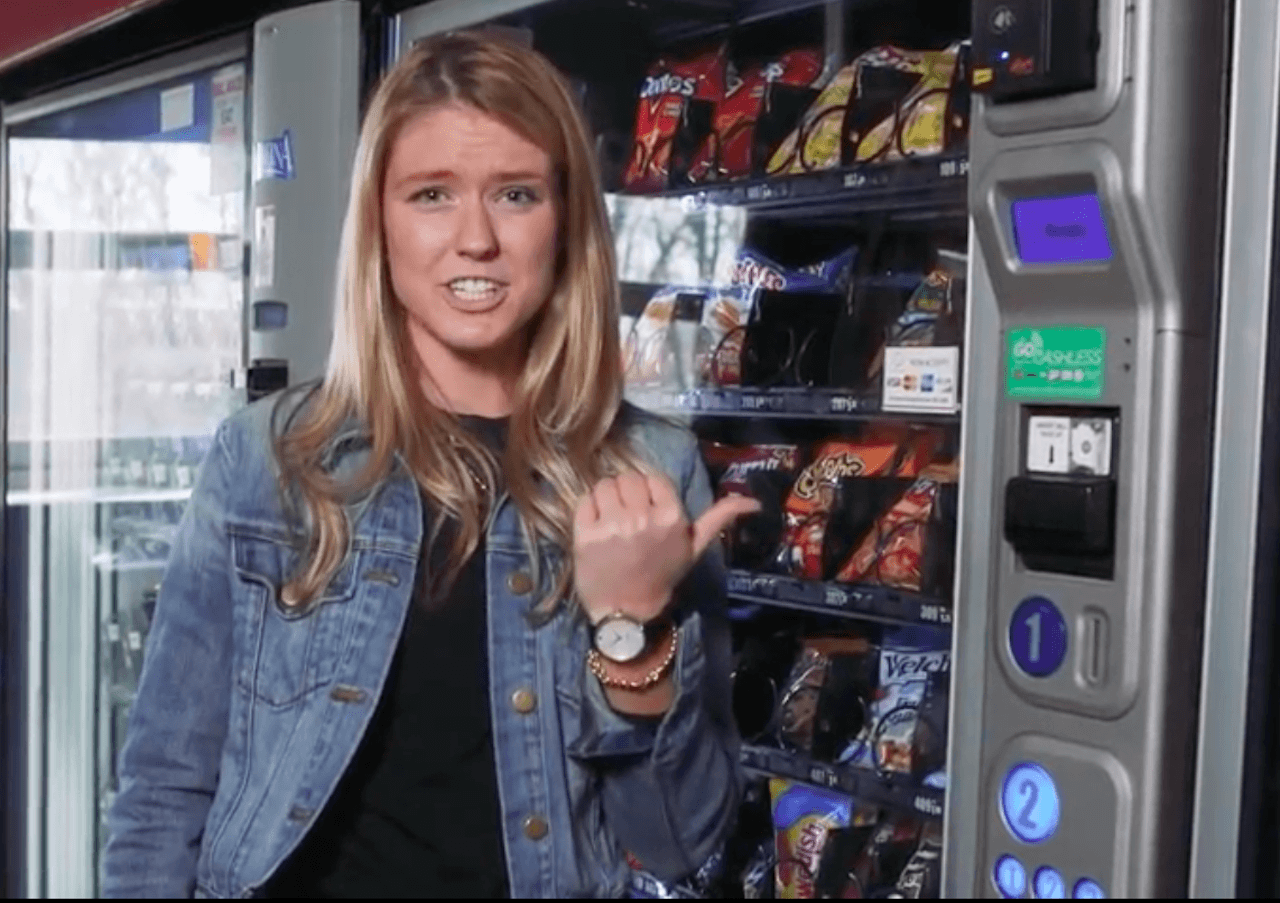 Mastercard is retrofitting vending machines in 300 cities with a Bluetooth receiver that will allow cashless (and coinless) consumers to use an app on their mobile phones to buy beverages and snacks.
Mastercard is retrofitting vending machines in 300 cities with a Bluetooth receiver that will allow cashless (and coinless) consumers to use an app on their mobile phones to buy beverages and snacks.
To bring about the change (apologies for the pun), Mastercard has teamed up with PayRange, a company that provides vending machine owners with a device that takes credit cards and mobile pay.
“Mastercard is not asking merchants to make replace their machines with new ones, but are instead bringing old machines into the digital payments space in a simple, convenient and financially responsible way,” a Mastercard rep told GeoMarketing. “They have manufactured a Bluetooth dongle that can be plugged into any vending machine to enable mobile payments.” Via geomarketing.com
Poland’s mBank embeds Android Pay in mobile app
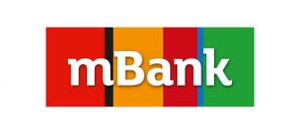 mBank has just introduced a mobile app with the Android Pay functionality, the possibility of logging in with a fingerprint, also in the Android platform, and a display of clients’ spending rate to help them control their budget.
mBank has just introduced a mobile app with the Android Pay functionality, the possibility of logging in with a fingerprint, also in the Android platform, and a display of clients’ spending rate to help them control their budget.
The design of the app was inspired by users’ opinions and habits. All this to create a mobile tool that meets each and every expectation of its user.
The new mBank app was made available to all the bank’s clients via Google Play and App Store on April 12, 2017. The software has a new interface and simpler navigation. It also offers brand new functionalities. Via finextra.com
The offline and online worlds collide at Amazon’s bookstores
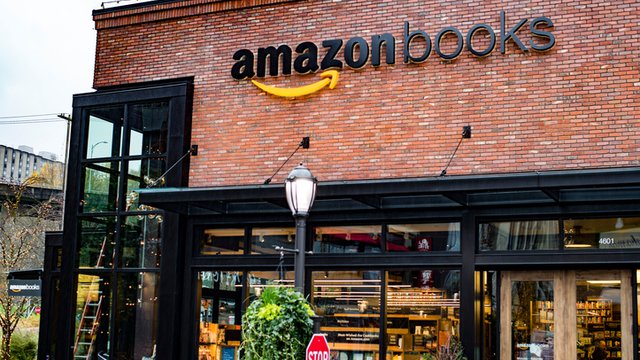 This place is weird. That was my first thought as I walked around one of Amazon’s new bookstores. The company recently opened one in Chicago’s Lakeview neighborhood and I was eager to visit it for a couple reasons, mostly because I wanted to see what made it different from your typical bookstore.
This place is weird. That was my first thought as I walked around one of Amazon’s new bookstores. The company recently opened one in Chicago’s Lakeview neighborhood and I was eager to visit it for a couple reasons, mostly because I wanted to see what made it different from your typical bookstore.
What I found was an experience that partly leans on mobile technology, but could use some improvements with something like beacons.
The first thing you’ll notice while shopping is the lack of prices on the book description tags on the shelves. Of course, you’ll find the suggested retail price on the book itself, but the lack of a price on an actual tag is deliberate, though the reason is not immediately apparent. Then, as I walked around the store, I noticed a price scanner on the wall. Strange, I thought. But after I scanned a book, the purpose became clear. Via mobilepaymentstoday.com
Transactis partners with Walletron for mobile wallet billing and payment
 Transactis has announced plans to expand its electronic billing and payment offering, BillerIQ, through a strategic relationship with Walletron, provider of moBills, a bill-to-wallet service. This alliance will allow businesses to present notifications and billing statements and provide a streamlined payment experience through customer smartphones without the need for a mobile app, according to a press release.
Transactis has announced plans to expand its electronic billing and payment offering, BillerIQ, through a strategic relationship with Walletron, provider of moBills, a bill-to-wallet service. This alliance will allow businesses to present notifications and billing statements and provide a streamlined payment experience through customer smartphones without the need for a mobile app, according to a press release.
Walletron will serve the premier distribution client base of Transactis, which includes leading players in financial services, technology and digital communications, the release said.
Walletron’s moBills solution operates within native mobile wallets on the leading smartphone systems — Apple Pay on iOS and Android Pay on Android phones — covering more than 97 percent of U.S. consumers, according to the release. Via mobilepaymentstoday.com
Even young, hip Americans don’t want to use mobile payment apps
 Despite their reputation for being tech-savvy, it’s still unlikely you’ll see a millennial use their phone to make a payment any time soon.
Despite their reputation for being tech-savvy, it’s still unlikely you’ll see a millennial use their phone to make a payment any time soon.
Only 14% of millennials said they use their bank’s mobile payment app often and 35% said they don’t use a mobile payment app at all, according to a new survey of about 2,000 millennials by LendEdu, which provides personal finance tools including cost comparison for refinancing student loans. About 44% said they most often use Venmo, the peer-to-peer payment app owned by PayPal PYPL, +0.27% that lets millennials pay one another digitally, either directly from their bank accounts, or with credit cards linked to their accounts. Only 1% said they use Square Cash, a service similar to Venmo.
Young Americans would, in theory, be the natural early adopters of such technology, and other surveys of all U.S. adults have shown similar results. Despite large investments by banks and financial technology companies in new services, mobile payment adoption has been slow in the U.S. in the last several years. Still, usage is projected to grow more rapidly in the next several years, until 2021, according to the research firm Forrester.
It’s not that most people don’t know these apps exist. About 56% of American and Canadian consumers said they are “extremely aware” they can use their phone as a payment device to buy goods or services, up from 41% who said they were in 2012, according to a survey of 4,000 adults by the consulting firm Accenture released last year. About 36% said they were “neutral” about knowing their phone or payment device could be used this way, up from 32% in 2012. And 8% said in 2016 they were “not at all aware,” down from 27% in 2012. Via marketwatch.com
Validated expands app that lets retailers pay for customer rides
 A Seattle-based app that lets shops and restaurants pay for their customers’ Lyft and Uber rides is expanding into eight more cities.
A Seattle-based app that lets shops and restaurants pay for their customers’ Lyft and Uber rides is expanding into eight more cities.
Launched last year to serve Seattle and Portland, Validated is now available in Boston, Chicago, Washington, D.C., Las Vegas, Los Angeles, New York City and four cities in California: Palo Alto, San Diego, San Francisco and Santa Monica.
The free mobile app lets retailers pay for a customer’s transportation as a way to show appreciation, drive sales and keep them coming back. Validated says it has more than 200 Seattle-area businesses listed in the app, ranging from national brands like Arc’teryx and Pandora to local businesses such like Elliott’s Oyster House and Loulay. Via bizjournals.com
Would you pay to make saving money easier? This app is about to find out
 When the financial app Digit hit the scene two years ago, it resonated with people who share a common financial struggle: Saving is pretty hard.
When the financial app Digit hit the scene two years ago, it resonated with people who share a common financial struggle: Saving is pretty hard.
Digit has tried to take the work out of saving by tracking users’ income and spending patterns, and setting aside “extra” cash that isn’t needed to cover regular expenses. Its users have saved $500 million since the app launched in February 2015 (including cash that may have been withdrawn later), according to the company.
But Digit could lose a chunk of its user base after it announced last week that it will start charging $2.99 a month for the service, after a 100-day grace period. The news sparked an immediate response from angry users who said they would be closing their accounts. “Loved digit, hate the ideas of fees,” one person commented on the company’s Facebook page. “Makes no sense to pay to save,” wrote another. Via washingtonpost.com








LET’S CONNECT